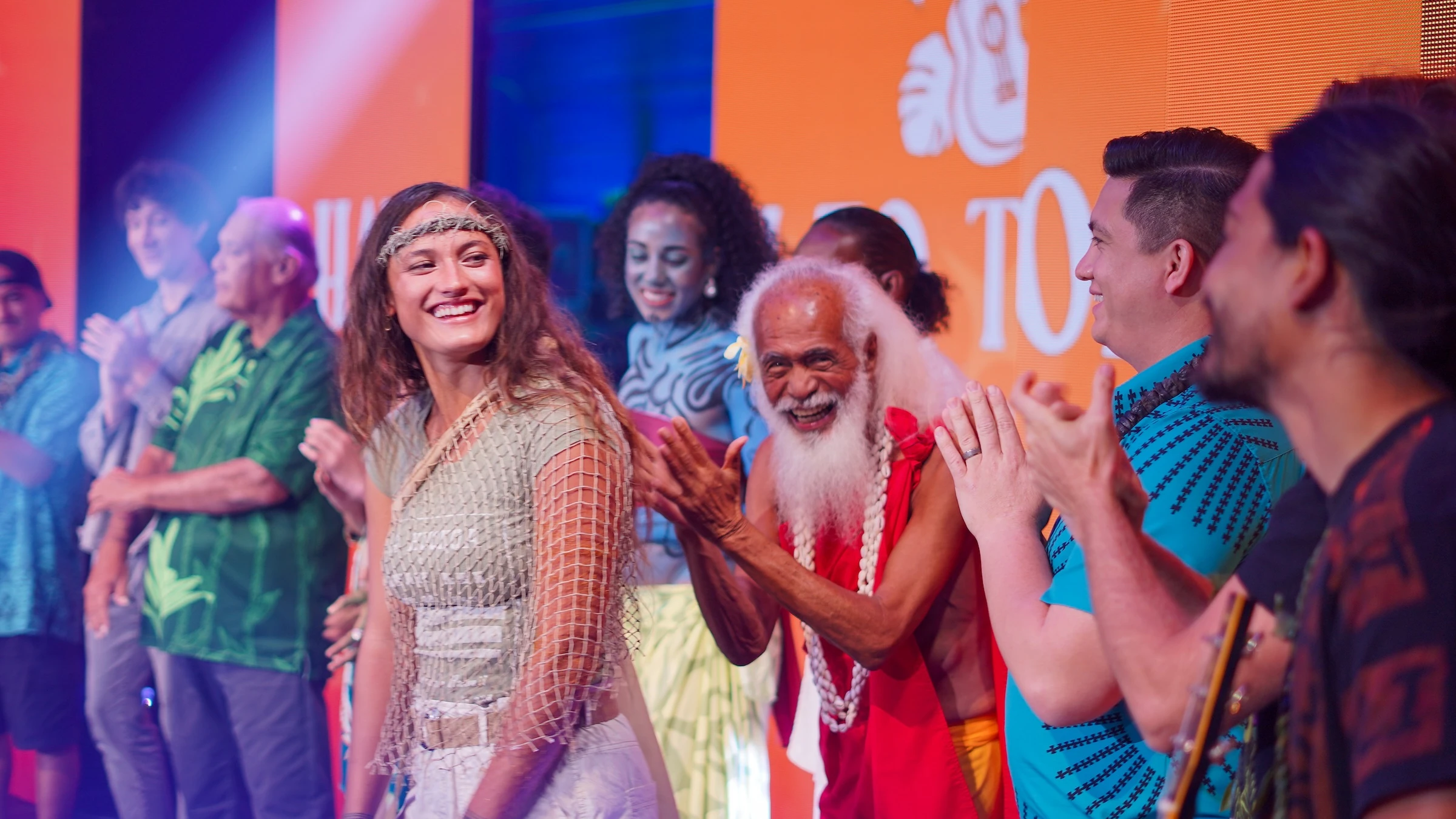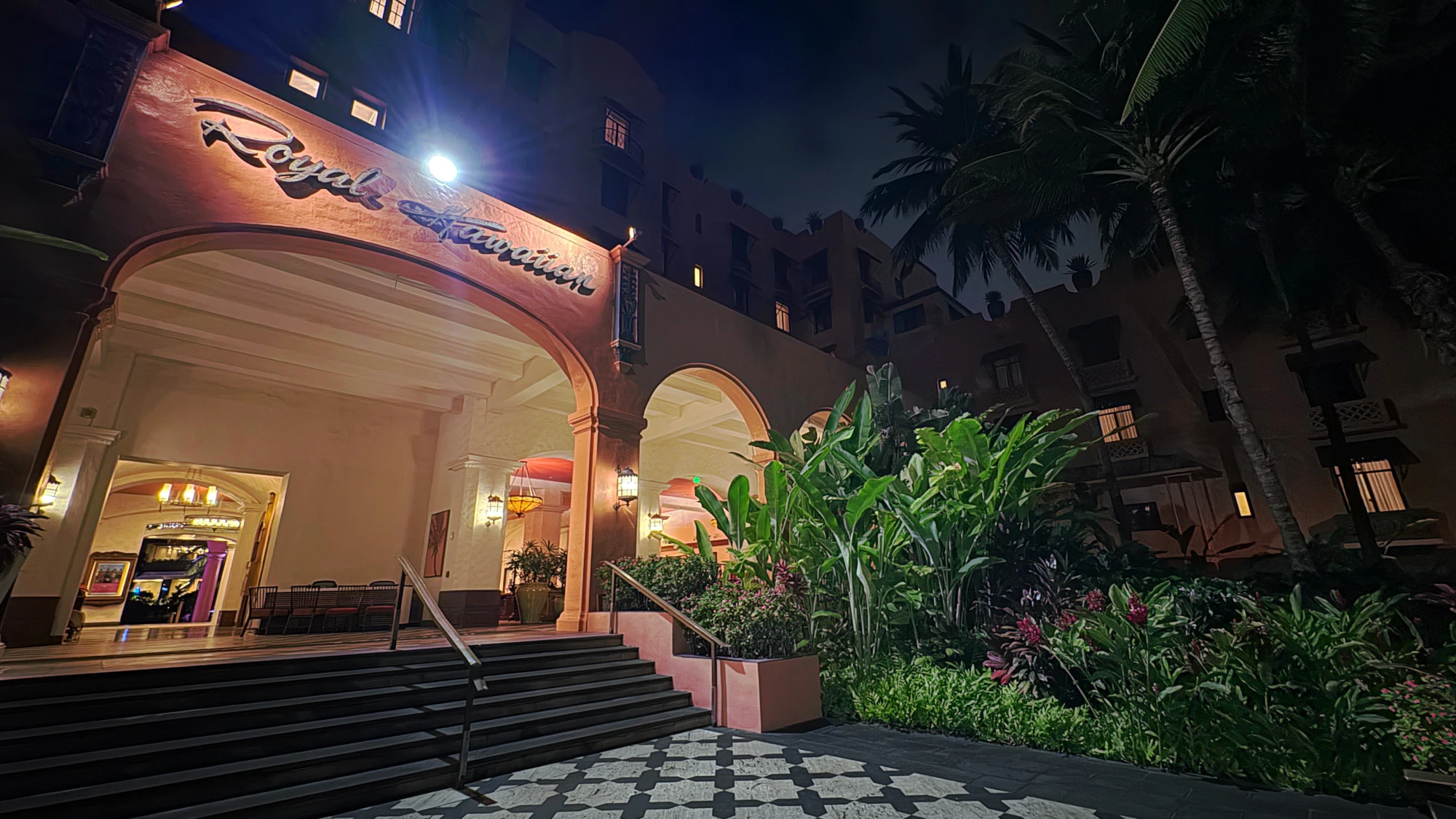In her 1937 book, Hawaiian Tapestry, Antionette Withington wrote about an interview with a man named George. She didn’t give a last name, but she stated that in his younger days, old George was an interpreter in King Kalākaua’s court. Everyone who knew George highly respected his experience and opinions.
In the interview, George said he saw a procession of ghosts when walking home in Waikīkī. It was early in the evening, just as the sky began to get dark, and he was alone. He said he saw a strange cloud of dust ahead of him, but it was silvery. Looking up, he saw just a sliver of a new moon, so he knew it wasn’t the moon that caused the dusty cloud to shine.
As he watched the cloud, he began to see figures of people, and he knew it must have been the huaka‘i pō, the night marchers, on their way to the old heiau on the slopes of Diamond Head. He crouched beside a boulder so the figures couldn’t see him. At first, all was silent as he watched the crowd of people, both young and old, walk toward the heiau. Then he heard the drums.
Standing as a sentinel at the far end of Waikīkī, Lē‘ahi is an iconic landmark that draws up to 3,000 daily visitors. Postcards, travel articles, and movies are plastered with the volcanic tuff cone’s silhouette whenever an image is needed to invoke the tropical allure of Hawaii’s sun-kissed shores. The mountain was once compared to the lae (brow) of the ‘ahi (yellowfin tuna) by Pele’s sister, Hi‘iaka, giving it the original name, Lae‘ahi. The distinctive mountain formation was later called Lē‘ahi.
Around the turn of the 19th century, Western explorers found shiny crystals in the rocks at the base of the mountain and believed they had found diamonds. As it turned out, they found calcite crystals of no value, but Diamond Head became the dormant volcano’s common nickname.
On the slopes of Lē‘ahi sat Papa‘ena‘ena, a heiau of po‘okanaka class (at which ancient Hawaiians offered human sacrifices). Papa‘ena‘ena heiau was once Kamehameha’s sacrificial temple dedicated to his war god, Kūka‘ilimoku.
Probably the last human sacrifice held at Papa‘ena‘ena Heiau was that of Kanihonui, Kamehameha’s nephew, who was hanai (adopted) to Kamehameha and Ka‘ahumanu. Historical accounts say that Ka‘ahumanu seduced the handsome 19-year-old, and when Kamehameha found out about their affair, he had no choice but to make an example of the young man.
After the fall of the kapu system, Papa‘ena‘ena heiau was destroyed. The property changed hands a few times before finally coming into the hands of Walter F. Dillingham, who built a home in the style of a villa he admired in Tuscany and named it La Pietra. After his death, the property was sold and is now La Pietra Hawai‘i School for Girls. But the mana of the past remains.
The building and dedication of a heiau involves a great deal of ceremony and protocol, which included long processions of men bound by strict kapu going to and from the heiau. During sacred ceremonies throughout the year, when the moon was in a particular phase and the ho‘ailona (signs) were affirmative, the men would march, sometimes carrying their ali‘i (chiefs) in a mānele (palanquin). The kapu of these marches was so severe that when the procession would pass, everyone in the vicinity would lie prostrate, ensuring their gaze did not fall upon the passing ali‘i. The punishment for breaking the strict kapu was a swift death. These processions are the basis of the legend of the huaka‘i pō, in which the warriors carry on in death the duties they performed in life.
The legend of Hawaii’s night marchers has endured over time, and the ghostly procession is still seen today all around the islands, even at Lē‘ahi.
In 2019, we hosted an evening picnic at Kapi‘olani Park. We ate, laughed, and shared ghost stories as our family and friends gathered near the bandstand. Later, I took about half of our group on a mini tour to a few spooky places in the immediate area. We walked to a group of three trees that seemed to hold the negative energy of past unfortunate events. I talked about how some unseen force attacked former police officers and literally dumped them out of their Cushman carts.
We walked along Kalākaua Avenue, and I pointed across the street where the Castle Estate used to be. I shared with my friends that in 1901, when workers were digging for a sewage system, they made a gruesome discovery. Ancient bones lay just a few feet below the sandy surface. In a three hundred foot long trench of four feet deep and less than two feet wide, over a dozen skeletons were found. Historians of the time believed that the bones must have been those of warriors, as some skeletons were six feet long. When I finished the story, I turned toward Lē‘ahi, and the group followed suit.
Suddenly, someone shouted, “Look!”
About twenty of us stood there in awe and wonder as we watched what appeared to be a line of torch lights coming down diagonally from the top of Lē‘ahi ridge to the base of the mountain, right near La Pietra school. For nearly a minute, no one spoke. We all just stared. A few people tried to take photos with their phones, but it was dark and the images were unclear.
Did we go closer to investigate? Of course not… my mother taught me better than that. But as a group, we collectively decided it was time to go home.





